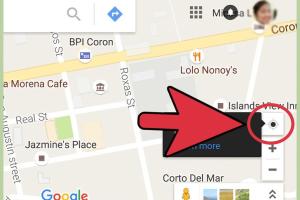Mastering Google Maps: How to Easily Find Your Current Location

-
Quick Links:
- Introduction
- Understanding Google Maps
- Importance of Knowing Your Current Location
- How Google Maps Determines Your Location
- Step-by-Step Guide to Getting Your Current Location
- Common Issues and Solutions
- Real-World Examples
- Expert Insights
- The Future of Location Services
- FAQs
Introduction
Finding your current location using Google Maps has become an essential skill in today's world. Whether you're navigating through a new city, ensuring safety during travel, or simply trying to find a nearby restaurant, Google Maps makes it easy to pinpoint your exact location. In this comprehensive guide, we will explore various methods to get your current location on Google Maps, delve into the technology behind it, and provide you with troubleshooting tips. Let's embark on this journey to master the art of location tracking!
Understanding Google Maps
Google Maps is a powerful web mapping service that provides users with satellite imagery, aerial photography, street maps, real-time conditions, and route planning for traveling by foot, car, bicycle, or public transportation. With over a billion active users, Google Maps has revolutionized how we navigate our world.
Key Features of Google Maps
- Real-time GPS navigation
- Traffic conditions and updates
- Location sharing capabilities
- Integration with local businesses and services
- Street View for immersive exploration
Importance of Knowing Your Current Location
Understanding your current location is critical for various reasons:
- Navigation: Ensures you reach your destination efficiently.
- Safety: Helps in emergency situations by providing exact coordinates.
- Local Discovery: Allows you to explore nearby attractions and services.
- Time Management: Estimates travel time based on your location.
How Google Maps Determines Your Location
Google Maps uses several technologies to determine your current location:
- GPS: Global Positioning System provides accurate location data.
- Wi-Fi Positioning: Uses nearby Wi-Fi networks to approximate location.
- Cell Tower Triangulation: Determines location based on nearby cell towers.
- Bluetooth Beacons: Localized positioning through Bluetooth signals.
Step-by-Step Guide to Getting Your Current Location
On Desktop
- Open your web browser and go to Google Maps.
- Click on the blue dot that appears on the map, which represents your location.
- Ensure that you have location services enabled in your browser settings.
On Mobile Devices
- Open the Google Maps app on your smartphone.
- Tap on the blue dot representing your current location. If it’s not visible, tap the target icon.
- Allow the app to access your location if prompted.
Common Issues and Solutions
Issue: Location Not Updating
Sometimes, Google Maps may not update your location. Here are some reasons and solutions:
- Weak GPS Signal: Move to an open area for better reception.
- Disabled Location Services: Ensure location services are enabled in your device settings.
- App Permissions: Check if Google Maps has permission to access your location.
Issue: Incorrect Location
If Google Maps displays an incorrect location, consider these factors:
- Device Calibration: Calibrate your device's compass and location settings.
- Wi-Fi Settings: Ensure Wi-Fi is enabled, as it improves accuracy.
Real-World Examples
Consider the following scenarios where knowing your current location can be beneficial:
- Traveling Abroad: A tourist in Paris uses Google Maps to locate nearby attractions and restaurants.
- Emergency Situations: A hiker lost in the woods utilizes Google Maps to find their way back to a trailhead.
- Delivery Services: A delivery driver uses real-time location updates to optimize their routes.
Expert Insights
According to industry experts, the accuracy of location services continues to improve with advancements in technology. The integration of AI and machine learning in mapping services is leading to more precise and reliable navigation experiences.
The Future of Location Services
The future of location services looks promising with the integration of augmented reality (AR) and more sophisticated algorithms. As technology evolves, we can expect even more user-friendly features in applications like Google Maps.
FAQs
1. How do I enable location services on my device?
On most smartphones, go to Settings > Location and toggle the location services to 'On'.
2. Can I use Google Maps without internet?
Yes, you can download maps for offline use, but real-time location tracking requires internet access.
3. Why is my location on Google Maps inaccurate?
Inaccuracies can occur due to weak GPS signals, disabled location services, or incorrect device settings.
4. How do I share my location with someone using Google Maps?
In the Google Maps app, tap on your profile picture, select 'Location Sharing', and choose who you want to share with.
5. Can Google Maps track my location continuously?
Yes, if you enable location services and allow Google Maps to access your location, it can track continuously.
6. How can I improve GPS accuracy on my device?
Ensure your device's software is up to date, enable Wi-Fi, and consider calibrating your device's compass.
7. What should I do if Google Maps crashes while trying to find my location?
Try restarting the app, checking your internet connection, or reinstalling the app if the issue persists.
8. Is there a way to see my location history on Google Maps?
Yes, you can view your location history by accessing the 'Your Timeline' feature in the Google Maps app.
9. Can I use Google Maps to find my friends’ locations?
Yes, if your friends share their location with you through Google Maps, you can see where they are.
10. How can I delete my location history on Google Maps?
Go to 'Your Timeline', select the dates you want to delete, and choose the option to delete them.